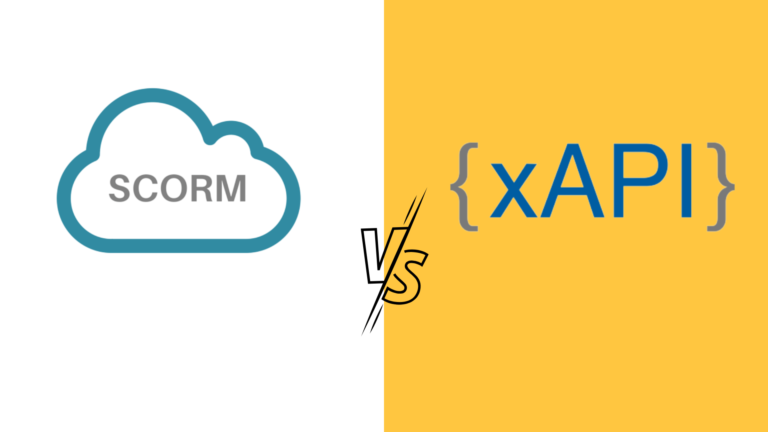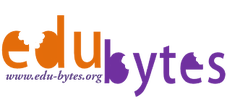
Here at Edubytes we do not recommend entering your learning content directly into an LMS. This is because there is a danger of not being able to access your content if your relationship with the software provider changes. It is far less risk to your RTO to create content using an independant course authoring tool and saving the content in a standard elearning file which is portable and can be used in any LMS you choose.
In the dynamic landscape of e-learning, two prominent standards have emerged to streamline the process of creating, delivering, and tracking online courses: SCORM (Sharable Content Object Reference Model) and xAPI (Experience API). Both are pivotal in shaping the future of digital education, yet they differ significantly in their approach and functionality.
SCORM File Formats:
SCORM, a widely adopted standard, primarily employs two file formats: SCORM 1.2 and SCORM 2004. These formats serve as a blueprint for creating interoperable content that can be easily shared across different learning management systems (LMS). SCORM-compliant courses typically consist of a collection of sharable content objects (SCOs) bundled together within a package.
SCORM 1.2, the earlier version, is renowned for its simplicity. It relies on JavaScript and HTML, making it compatible with a wide range of browsers. However, its limitations in tracking and reporting capabilities led to the development of SCORM 2004. The latter offers enhanced sequencing and navigation features, providing a more robust framework for tracking learner progress and interactions.
Usage and Pros of SCORM File Formats:
SCORM file formats are widely used for their compatibility and ease of integration. Many traditional LMS platforms are designed to work seamlessly with SCORM content, offering a structured and standardized way of delivering e-learning materials. The formats provide a reliable method for tracking learner progress, quiz scores, and completion status.
Pros:
- Compatibility: SCORM courses can be integrated into various learning management systems, ensuring content consistency across platforms.
- Ease of Use: The straightforward structure of SCORM makes it accessible for content creators, allowing them to focus on the educational material rather than intricate technical details.
- Standardization: SCORM’s adherence to industry standards ensures consistency and compatibility, facilitating a smooth learning experience for users.
Cons:
- Limited Interactivity: SCORM courses are often criticized for their limited interactivity and inability to capture detailed learner experiences beyond basic completion and quiz scores.
- Data Silos: SCORM relies on a centralized model, making it challenging to gather and analyze learner data across different platforms or outside the LMS.
xAPI:
In contrast to the structured nature of SCORM, xAPI, also known as Tin Can API, embraces a more flexible and versatile approach to tracking learning experiences. Instead of relying on a specific file format, xAPI captures a wide array of learning activities through a simple statement structure, often referred to as “statements” or “activity statements.”
Usage and Pros of xAPI:
xAPI’s ability to track various learning experiences sets it apart from SCORM. Rather than being limited to completion status and quiz scores, xAPI can record a diverse range of interactions, such as simulations, mobile learning, and informal learning experiences.
Pros:
- Granular Data Tracking: xAPI captures detailed and granular data about learner interactions, providing a more comprehensive view of the learning journey.
- Versatility: xAPI is not confined to traditional e-learning courses; it can track learning experiences across a myriad of platforms and devices, making it suitable for modern, diverse learning environments.
- Real-time Data Analysis: xAPI allows for real-time analysis of learner data, enabling educators to adapt and personalize learning experiences based on individual progress and preferences.
Cons:
- Implementation Complexity: The flexibility of xAPI comes at a cost of increased complexity in implementation, requiring a more sophisticated technical infrastructure.
- Transition Challenges: Many existing LMS platforms are optimized for SCORM, making the transition to xAPI more challenging for organizations with established e-learning infrastructures.
In the evolving landscape of e-learning, the choice between SCORM and xAPI depends on the specific needs and goals of an organization. While SCORM offers a standardized and reliable approach to e-learning content, xAPI provides a more flexible and comprehensive solution for tracking diverse learning experiences. As technology advances and education paradigms continue to shift, understanding the distinctions between SCORM and xAPI becomes crucial for making informed decisions in the realm of digital education.
Here at Edubytes we can help you choose the best option for your LMS and RTO needs.
Our learning content is available in most common SCORM file formats and xAPI.
